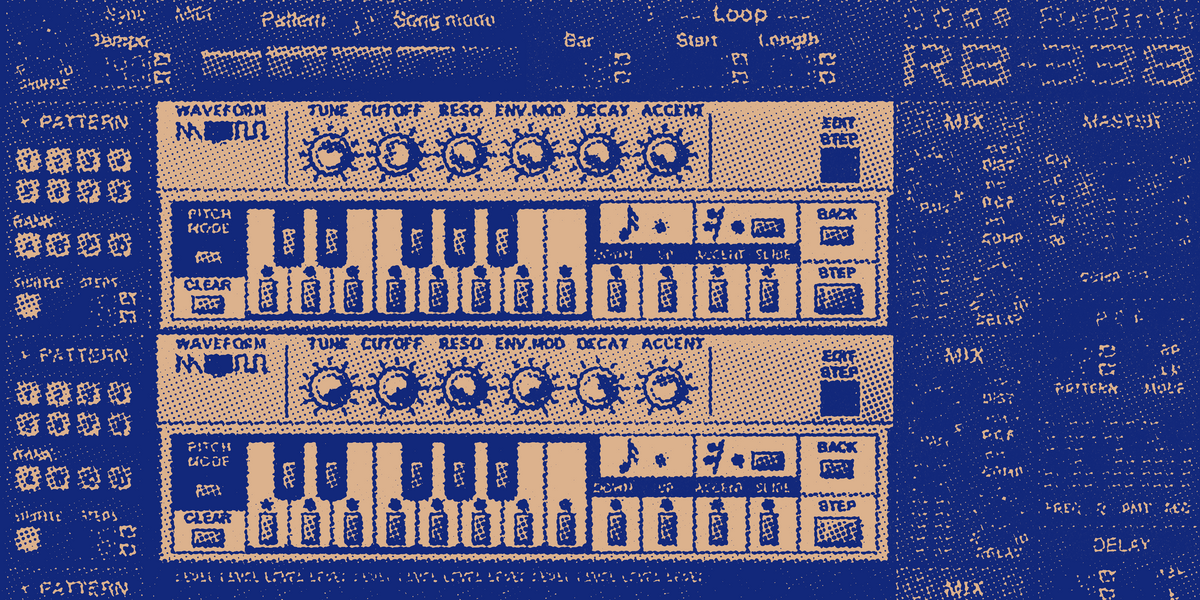Remembering the mighty ReBirth RB-338 (a generation's first 303, 808 and 909)
We take software emulations for granted now. But the ReBirth RB-338 was a true breakthrough for a world tuning into the sound of 303, 808 and 909s.

Happy 303 day! Here's a slightly different way to celebrate today, not with adoration of the original Roland TB-303, but with a lot of love and nostalgia for the software emulation that many, many, many of us would encounter long before we could find, afford, or use the real deal. And that is of course the Propellerhead ReBirth RB-338.
The first I ever heard of ReBirth was standing outside of a rave at The Arena in Brisbane in decades long gone, wrapped in a big jacket and nodding at a very enthusiastic music producer telling me I needed to check this thing out. "It's like a 303 and an 808 and a 909 and it's amazing mate". And it was. Launched in 1997, this software synthesizer was a game-changer, democratizing the creation of electronic music and leaving its mark on the culture of music producers across the globe.
What is Rebirth?
Rebirth was a pioneering software emulation of the classic Roland devices - the TB-303 Bass Line synthesizer and the TR-808 and TR-909 Rhythm Composers. These iconic machines were instrumental in shaping the sounds of electronic music genres such as techno, house, and acid. Think of tracks like Josh Wink's "Higher state of consciousness" or Phuture's "Acid Tracks" (or much of the early Trax Records releases) as a start. However, their physical versions were often expensive and hard to come by. Rebirth brought these legendary devices to the masses in a digital format, making them accessible to anyone with a computer.
The 303, 808, and 909
The Roland TB-303, TR-808, and TR-909 are revered in the music world for their distinctive sounds. There simply wouldn't be any Acid House without them. The TB-303 is known for its squelchy, resonant basslines that became the backbone of acid house. The TR-808, with its booming bass drum, snappy snare, and crisp hi-hats, defined the rhythm of countless hip-hop and dance tracks. The TR-909, with its punchy kick and sizzling cymbals, became a staple in techno and house music.
Rebirth emulated these machines with remarkable accuracy. It allowed users to program patterns on the 303 and drum machines, just like on the original hardware. The software also included a pattern-controlled filter (PCF) and a distortion unit, adding even more sonic possibilities.
Cultural Impact
The cultural impact of ReBirth was nothing short of transformative. It was one of the first software synthesizers to gain widespread acceptance, heralding the era of bedroom producers. It made the process of creating music more affordable and accessible, breaking down barriers and opening up a world of possibilities for musicians with images of The Hacienda or Ibiza in their mind, but without the resources or access to the hardware that inspired the Acid House and House music culture.
Rebirth also played a significant role in the proliferation of electronic music genres. By emulating the sounds of the 303, 808, and 909, it helped keep these iconic sounds alive and relevant, even as the original hardware became increasingly rare.
Notable artists such as Fatboy Slim, The Chemical Brothers (on "It began in Afrika"), and Moby have been known to use Rebirth in their productions, further cementing its place in music history. Fatboy Slim's "Right Here, Right Now" and Moby's "Natural Blues" are just a few examples of hits produced with the help of Rebirth. It's easy to look back and think of the software emulation as a toy, but that's what the music industry thought of the original TB-303, so there's some poetic justice in hearing massive tracks that used it doing so well.
About those Radium cracks
In the late 90s and early 2000s, software piracy was a rampant issue, and Rebirth was not immune. The software was famously cracked by a group known as Radium. Radium was a prolific cracking group that targeted music software, and their version of Rebirth quickly spread across the internet.
The cracked version allowed users to bypass the software's copy protection, making it freely available to anyone with an internet connection. This led to a significant increase in the software's user base, as more and more people were able to access it without paying.
While this undoubtedly contributed to the software's popularity, it also represented a significant loss of revenue for Propellerhead. The company was forced to invest in stronger copy protection measures and pursue legal action against the pirates, diverting resources that could have been used for further development and innovation.
However, the piracy incident also had an unexpected side effect. It introduced Rebirth, and by extension, the sounds of the 303, 808, and 909, to a much wider audience. This helped to further cement the software's cultural impact and influence on the music production scene. Despite the challenges posed by piracy, Propellerhead continued to support and develop Rebirth until its discontinuation in 2005.
Legacy and Fond Memories
Today, ReBirth is no longer in active development, having been discontinued by Propellerhead in 2005. However, its legacy lives on. It is fondly remembered by those who used it, and its influence can still be heard in the music produced today. It is often cited as a source of inspiration, a testament to its enduring appeal.
Rebirth stands as a testament to the power of music technology to democratize, inspire, and create. It brought the sounds of the 303, 808, and 909 to the masses, forever changing the landscape of electronic music. Its cultural impact is undeniable, and its legacy continues to inspire. As we look back on the history of Rebirth, we are reminded of the power of music technology to democratize, inspire, and create. Long live ReBirth, the software that gave birth to a new era of music production.


